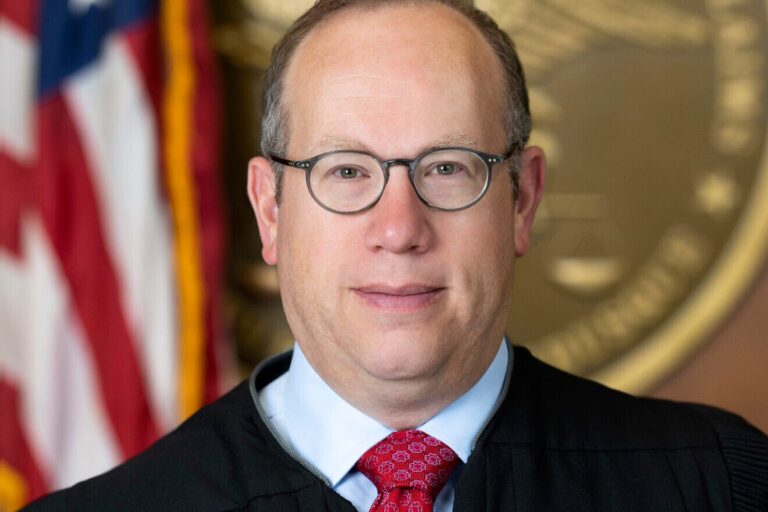President Donald Trump said Wednesday he would consider sending the suspect in the New York bike path attack to the Guantanamo Bay detention center. But just a few hours later, the government filed federal terrorism charges against suspect Sayfullo Saipov, signaling an intent to prosecute him within the U.S.
The one-two developments marked a sharp disconnect between the president and his administration.
Trump had professed himself to be open to the idea of sending Saipov to Guantanamo in a seemingly off-the-cuff answer to questions from reporters.
“I would certainly consider that, send him to Gitmo,” Trump said, using the familiar shorthand for the detention center. The White House later reinforced that idea by saying it considered Saipov to be an “enemy combatant.”
But with the filing of federal charges, there was little indication that the threat of Guantanamo was anything more than tough talk.
No one held within the U.S. has been sent to Guantanamo since the detention center opened in January 2002 to hold suspected members of al-Qaida and the Taliban. Still, elected officials routinely raise the prospect of doing so after attacks as a way to signal toughness in the fight against terrorism.
Trump joined those ranks a day after a driver veered into a city bike path in Manhattan killing eight people. The president agreed that the U.S. base in Cuba would be an option for Saipov, an immigrant from Uzbekistan who authorities say was inspired by the Islamic State.
The U.S. has to come up with a method of punishment that is “far quicker and far greater than the animals are getting right now,” Trump said.
It is an open question whether the administration could send Saipov to Guantanamo Bay, in part because courts have not ruled whether the 2001 Authorization for Use of Military Force — which permits the government to detain enemy combatants for the duration of a military conflict — applies to the Islamic State and its followers, said Stephen Vladeck, a national security law professor at the University of Texas at Austin.
The Islamic State did not exist when the authorization was passed.
Vladeck noted that American criminal courts, which have secured hundreds of terrorism-related convictions since Sept. 11, have been more efficient than the military tribunal process at Guantanamo Bay.
Just seven men have been convicted either by trial before military commission or through plea bargains, including four whose convictions were later overturned on appeal or invalidated.
There are another seven held at Guantanamo still facing trial, including five men charged in the Sept. 11, 2001, terrorist attack and another accused of orchestrating the 2000 bombing of the USS Cole. Those cases are bogged down in pretrial litigation and are likely years from resolution.
“If the goal is to actually punish the perpetrator, then sending him to Guantanamo is just about the worst thing you can do,” Vladeck said.
The only advantage that Guantanamo might have is that men can be held there indefinitely without charge, said Bryan Broyles, the former chief defense counsel for the commissions, which combine elements of military and civilian court.
“There is no other benefit to Guantanamo,” Broyles said. “It’s more expensive. It’s harder to use. It’s slower to use and it lacks the legitimacy in the international community.”
Amnesty International USA said it would be a “grave mistake” to send Saipov to Guantanamo. “He’s a criminal suspect and should be treated as such by the U.S. justice system,” said Daphne Eviatar, director of the group’s security with human rights program.
Trump said during the campaign that he wanted to fill Guantanamo with “bad dudes.” But the Justice Department last week opted to send a man accused of playing an instrumental role in the 2012 Benghazi attacks to federal court in Washington to face charges — not Guantanamo. Similarly, the U.S. on Wednesday indicted 36-year-old Mirsad Kandic in federal court in New York. Prosecutors say he recruited and facilitated the travel of foreign fighters to join the Islamic State and extradited him from Bosnia.
In at least a physical sense, there are no practical reasons why the U.S. couldn’t hold someone at Guantanamo. The detention center, which reached a maximum population of about 680 in the summer of 2003, is now down to just 41, and there is plenty of space for more. Asked if there were any plans to add anyone, a detention center spokeswoman had no immediate comment.
The Pentagon and a base spokeswoman referred questions to the Justice Department.
(AP)












4 Responses
Why send him to Guantamo?? Send him to the electric chair where he belongs!!!
and hold him until we can trade him for someone?
New York State will gladly, at no expense to the federal government, lock him up for the rest of his life, and in case New York releases him, he can then be tried on federal charges which can involve capital punishment (I suspect Trump will not merely approve, but would probably offer to be the executioner and have it televised).
I don’t understand the system if there’s a terror attack on the world trade center there’s a huge campaign for REVENGE which followed 9/11 for years why should this be different?? It’s not about justice it’s REVENGE!!!! He represents isis!!!!
dont call this evil thing “him”,”guy”or “man” even calling him an animal is a compliment